Complete Solutions to EXERCISE of chapter MECHANICAL PROPERTIES OF SOLIDS of Class 11 book with complete answers and questions
| Class 11 | PHYSICS |
| Chapter | MECHANICAL PROPERTIES OF SOLIDS |
| NCERT | EXERCISE |
| Number Of Questions | 21 |
| Academic Year | 2023-24 |
A steel wire of length `4.7 m` and cross-sectional area `3 xx 10^(-6) m^(2)` stretches by the same amount as a copper wire of length `3.5 m` and cross-sectional area of `4 xx 10^(-6) m^(2)` under a given load. The ratio of Young's modulus of steel to that of copper is
View SolutionFig., shows the stress-strain curve for a given materal. What are (a) Young's modulus and (b) approximate yield strength for this material?
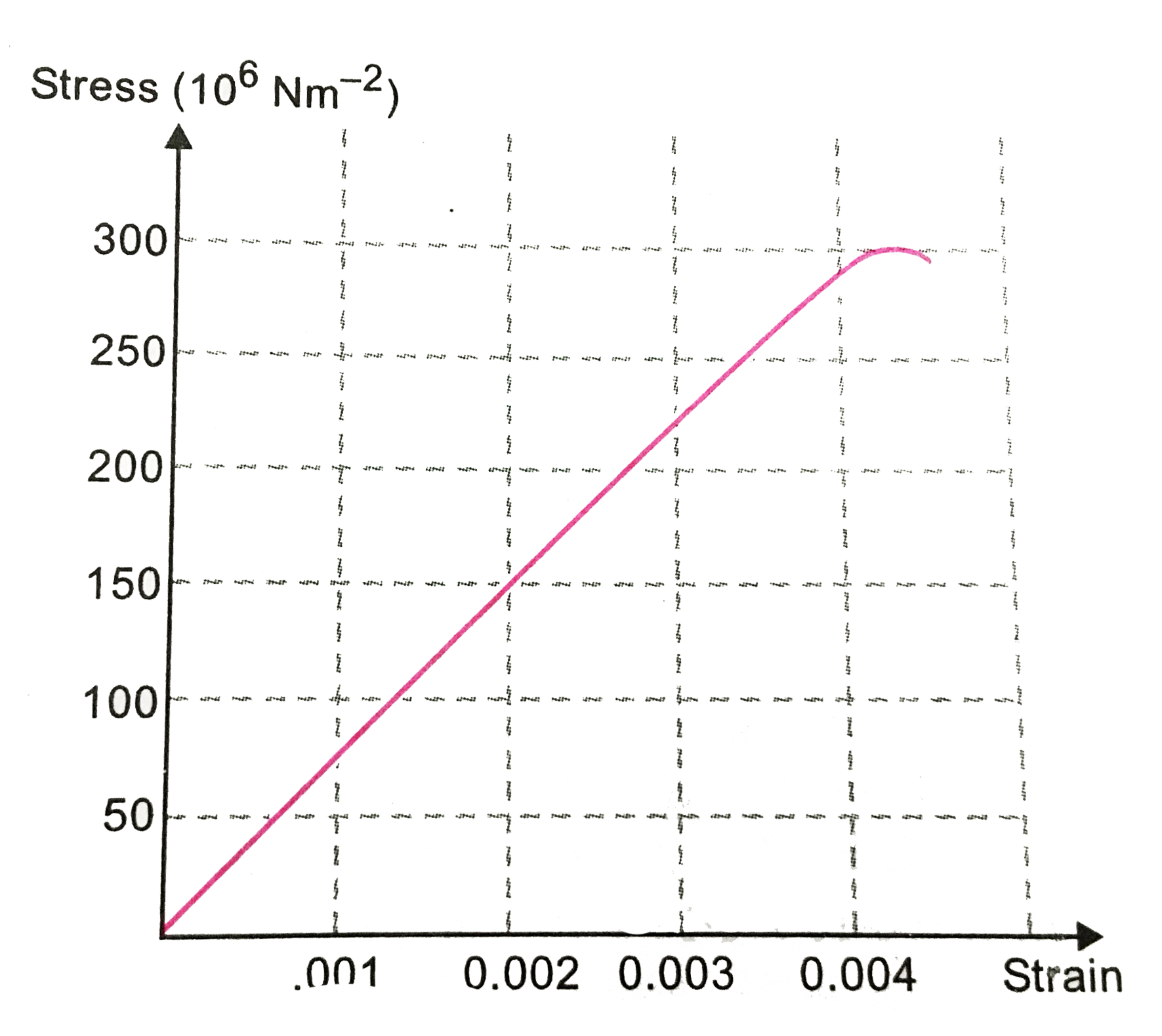
View SolutionThe stress versus strain graph for two materials A and B are shown in fig. the graph are on the same scale. ltbr. (a) Which material has greater Young's modulus?
(b) which of the two is stronger material?
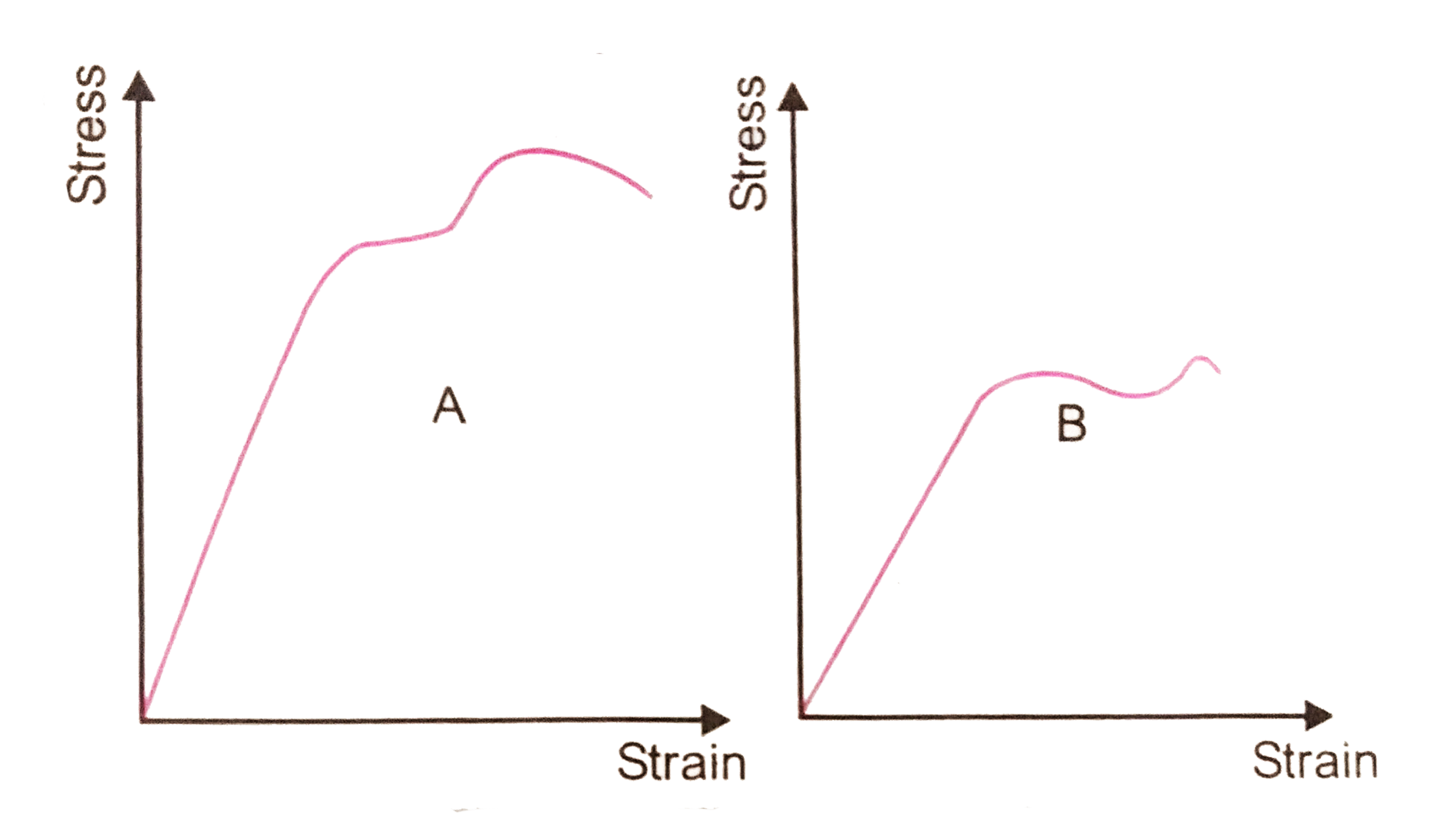
View SolutionRead each of the statement below carefully and state, with reasons, if it is true or false.
(a) The modulus of elasticity of rubber is greater than that of steel.
(b) the stretching of a coil is determined by its shear modulus.
View SolutionTwo wires of diameter 0.25 cm, one made of steel and the other made of brass are loaded as shown in fig. The unloaded length of steel wire is `1.5 m ` and that of brass wire is 1.0m. Compute the elongations of the steel and the brass wires.
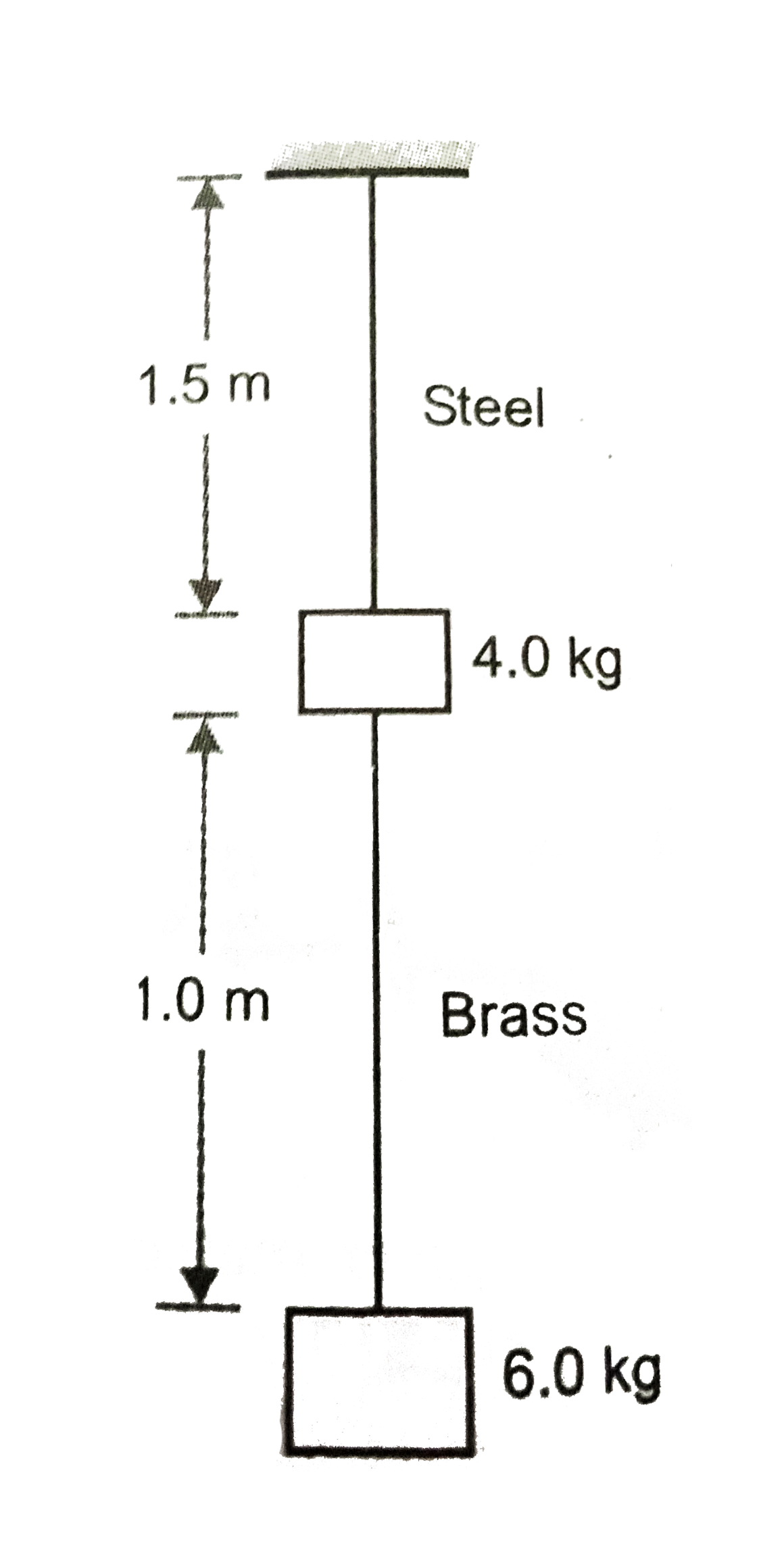
View SolutionThe edges of an aluminum cube are `10 cm` long. One face of the cube is firmly fixed to a vertical wall. A mass of `100 kg` is then attached to the opposite face of the cube. Shear modulus of aluminum is `25 xx 10^(9) Pa`, the vertical deflection in the face to which mass is attached is
View SolutionFour identical hollow cylindrical columns, support a ig structure of mass M. The inner and outer radii of a column are `R_(1)`, and `R_(2)`, respectively. Assuming the load distribution to be uniform, the compressional strain of each column is
(where Y is Young's modulus of the column).
View SolutionA piece of copper having a rectangular cross section of `15.2 xx 19.1 mm` is pulled in tension with 45,500N, force producing only elastic deformation. Calculate the resulting strain. Shear modulus of elasticity of copper is `42 xx 10^(9)Nm^(-2)`.
View SolutionA steel cable with a radius of 1.5 cm support a chairlift at a ski area.if the maximum stress is not to exceed `10^(8) Nm^(-2)`, what is the maximum load the cable can support?
View SolutionA rigid bar of mass 15 kg is supported symmetrically by three wires each 2 m long. Those at each end are of copper and middle one is of iron. Determine the ratio of their diameters if each is to have the same tension. Young's modulus of elasticity for copper and steel are `110 xx 10^(9)Nm^(-2)` and `190 xx 10^(9)Nm^(-2)` respectively.
View SolutionA 14.5 kg mass, fastened to the end of a steel wire of unstretched length 1m, is whirled in a vertical circle with an angular velocity of `2 rev.//s` at the bottom of the circle. The cross-sectional area of the wire is `0.065 cm^(2)` . Calculate the elongaton of the wire when the mass is at the lowest point of its path `Y_(steel) = 2 xx 10^(11) Nm^(-2)`.
View SolutionCompute the bulk modulus of water from the following data : initial volume = 100.0 litre, pressure increase = 100.0 atmosphere. Final volume - 100.5 litre . (1 atmosphere = `1.013 xx 10^(5) Pa)`. Compare the bulk modulus of water that of air (at constant temperature). explain in simple terms why the ratio is so large.
View SolutionWhat is the density of ocean water at a depth, where the pressure is 80.0 atm, given that its density at the surface is `1.03 xx 10^(3) kg m^(-3)`? Compressibilty of water `= 45.8 xx 10^(-11) Pa^(-1)`. Given 1 atm. =`1.013 xx 10^(5) Pa`.
View SolutionCompute the fractional change in volume of a glass slab, when subjected to a hydraulic pressure of 10 atmosphere. Bulk modulus of elasticity of glass = `37 xx 10^(9) Nm^(-2)` and 1 atm = `1.013 xx 10^(5)Pa`.
View SolutionDetermine the volume contraction of a solid copper cube, 10 cm on an edge when subjected to hydraulic pressure of `7 xx 10^(6)Pa`. Bulk modulus of copper = 140 Gpa.
View SolutionHow much should the pressure on a litre of water be changed to compress it by 0.10%? Bulk modulus of elasticity of water = `2.2 xx 10^(9) Nm^(-2)`.
View SolutionAnvils made of single crystal of diamond , with shape as shown in fig. are used to investigate behaviour of materials under very high pressure. Flat faces at the narrow end of the anvil have a diameter of 0.5 mm, and the wide ends are subjected to a compressional force of 50,000 N. What is the pressure at the tip of the anvil?
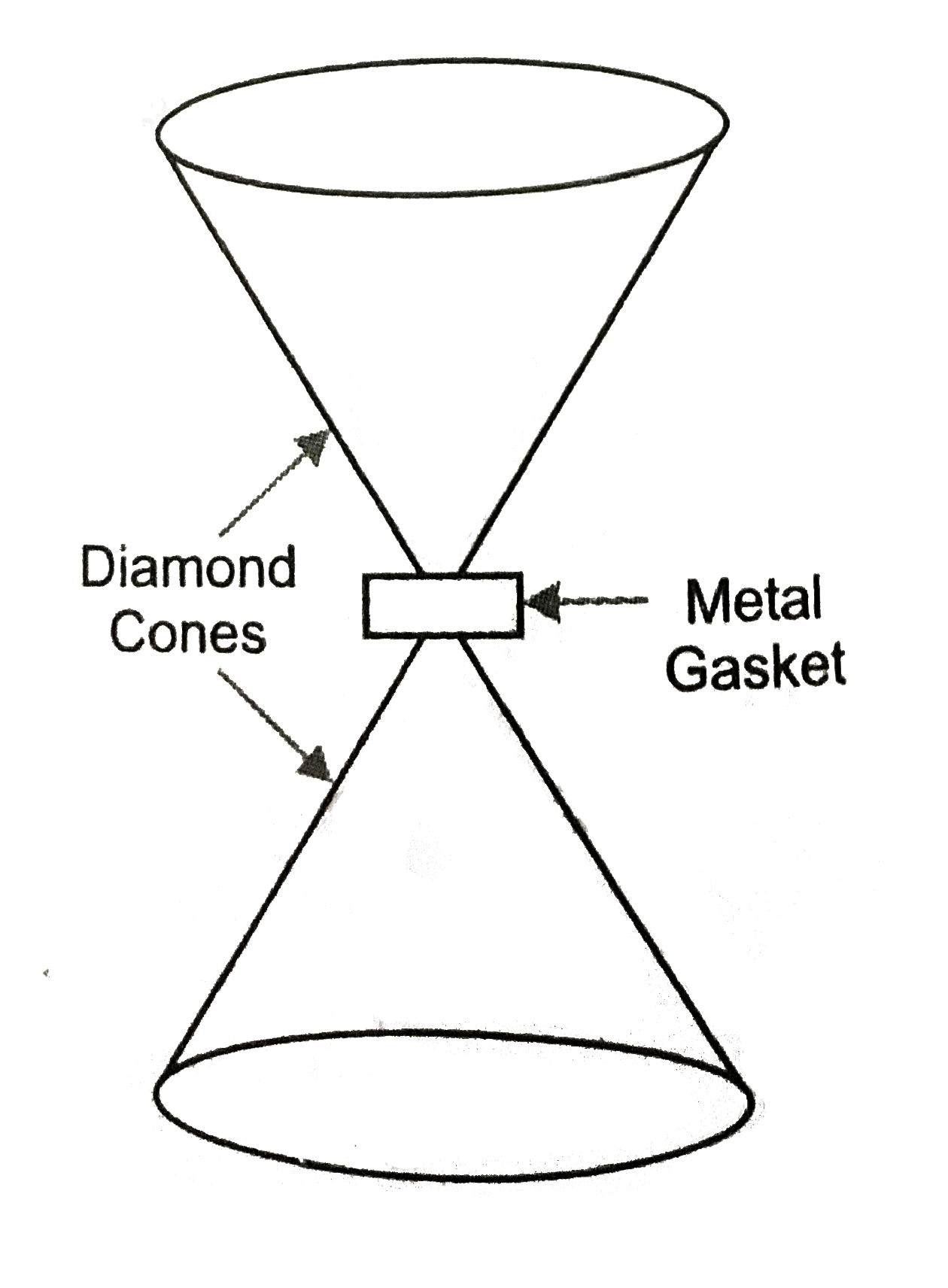
View SolutionA rod of length 1.05 m having negliaible mass is supported at its ends by two wires of steel (wire A) and aluminium (wire B) of equal lengths as shown in fig. The cross-sectional area of wire A and B are `1 mm^(2)` and 2` mm^(2)`, respectively . At what point along the rod should a mass m be suspended in order to produce (a) equal stresses and (b) equal strains in both steel and aluminium wires. Given,
`Y_(steel) = 2 xx 10^(11) Nm^(-2) and Y-(alumi n i um) = 7.0 xx 10^(10)N^(-2)`

View SolutionA mild steel wire of length 1.0 m and cross-sectional are `0.5 xx 10^(-20)cm^(2)` is streached, well within its elastic limit, horizontally between two pillars. A mass of 100 g is suspended from the mid point of the wire, calculate the depression at the mid point.
`g = 10ms^(-2), Y=2 xx 10^(11)Nm^(-2`.
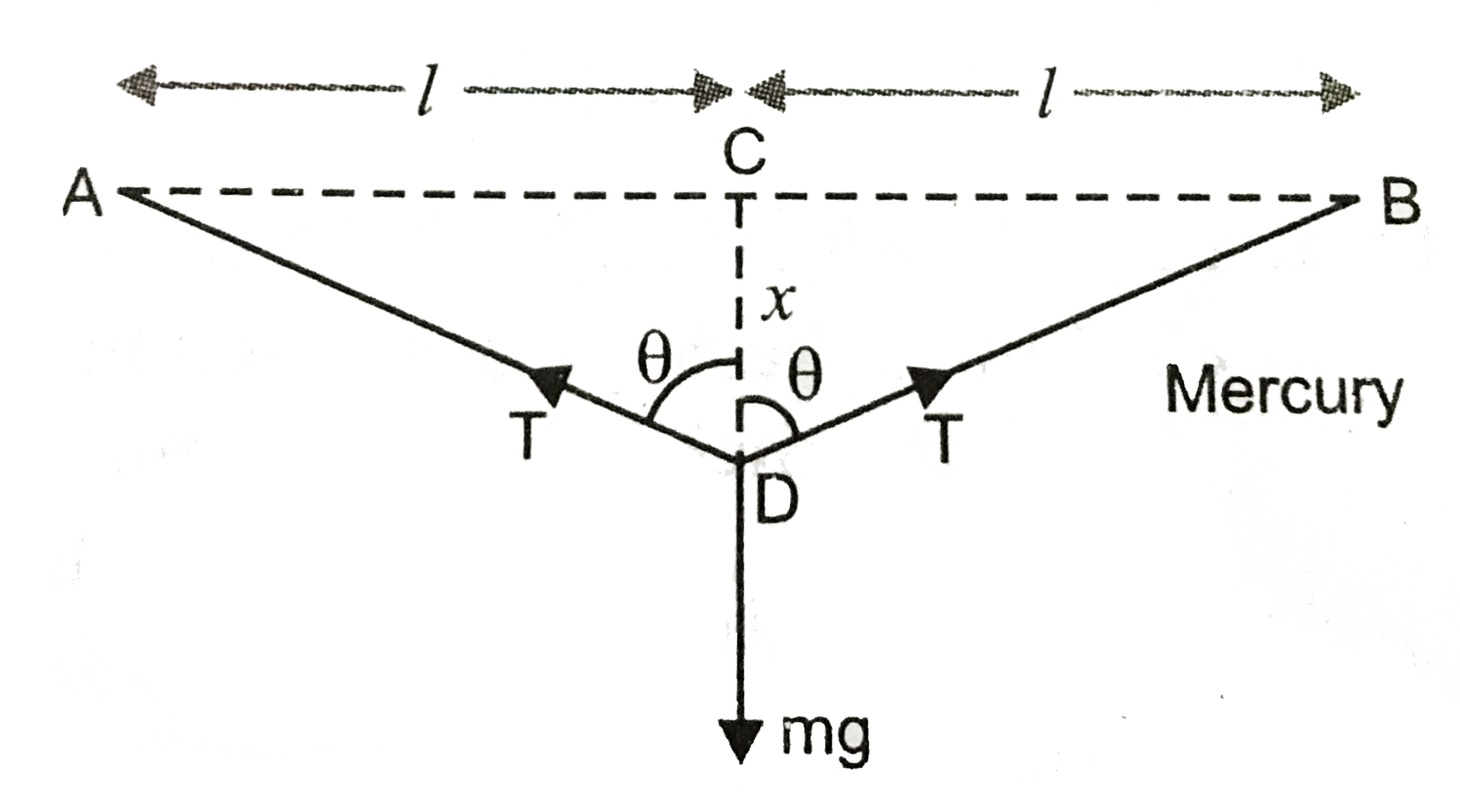
View SolutionTwo strips of metal are riveted together at their ends by four rivets, each of diameter 6 mm. Assume that each rivet is to carry one quarter of the load. If the shearing stress on the rivet is not to exceed `6.9xx10^7Pa`, the maximum tension that can be exerted by the riveted strip is
View SolutionThe marina Trench is located in the pacific ocean, and at one place it is nearly eleven km beneath the surface of water. The water pressure at the bottom of the Trench is about `1.1 xx 10^(8) Pa`. A steel ball of initial volume `0.32 m^(3)` is dropped into the ocean and falls to the bottom of the Trench. what is the change in the volume of the ball when it reaches to the bottom? Bulk modulus for steel =`1.6 xx 10^(11) Nm^(-2)`.
View Solution
EXERCISE questions and complete solutions for chapter MECHANICAL PROPERTIES OF SOLIDS of NCERT PHYSICS(ENGLISH) of Class 11